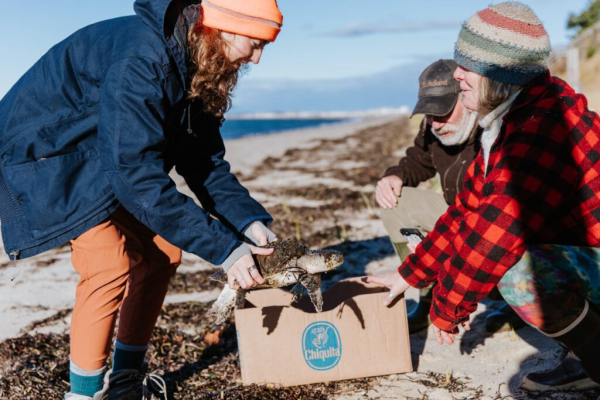Wildlife are not Pets
GW: Good advice in any state.
WATERBURY, VT – Wild animals do not make good pets. Some are dangerous when they reach maturity, almost all do not adjust well to captivity, and many populations of reptiles and amphibians, including turtles, are being threatened by people illegally collecting them in the wild.
The Vermont Fish and Wildlife Department says a recent newspaper advertisement promoting turtles as pets and showing a photo of a wood turtle could mislead people to think it is OK to keep a wood turtle. It is illegal in Vermont to catch or possess a wood turtle as well as other native turtles.
Vermont is home to seven species of turtles: spotted turtle (small with distinct yellow spots; endangered and known from just a handful of locations), spiny softshell (large, threatened, confined to Lake Champlain and lower portions of rivers that flow into Lake Champlain), map turtle (up to 10″ and confined mainly to Lake Champlain), musk turtle (rarely seen lake or stream bottom walker), snapping turtle (large, prehistoric looking giant that can have a 18″ shell and be 36″ nose to tail tip; can live up to 100 years and lay up to 100 eggs per year), painted turtle (perhaps our most plentiful turtle, relatively small, smooth dark shell, and likely a mix of midland and eastern subspecies in Vermont), and last but certainly not least, the wood turtle.
The wood turtle averages about 7.5 inches in shell length, and it has reddish-orange skin on its neck and legs and a roughly textured shell. It is dependent on streams and small rivers where it spends the winter on the bottom. In warmer months it may travel 1000 or more feet from the stream to forage on land.
Adult wood turtles may live 60 years, but egg and hatchling survival is extremely low. Survival of older juveniles and adult breeders is key to maintaining this species. The wood turtle is rare throughout its range which includes Vermont.
Taking a turtle home removes it from its breeding population and reduces that population’s chances of replacing turtles that die. It takes many years for a turtle to mature and we need the older breeders to maintain populations. Only 2 percent of hatchling turtles may survive to become breeding adults, and wood turtles only lay an average of seven eggs each year.
Wood turtles have not fared well in the face of human development of the landscape. Habitat loss and alteration, isolation of populations from each other, road mortality, impacts from mowers, increase in turtle predators such as raccoons and skunks, and collection of wild turtles as pets have contributed to a region-wide decline in this species.
It is illegal to collect and possess native wildlife, including turtles, as pets. Yet, an illegal pet-trade still exists. Even animals reported to be “captive bred” are a problem because breeding stock comes out of the wild.
Don’t be part of the problem. Remember that wildlife are not pets. They belong in the wild. Enjoy Vermont’s natural heritage where it belongs — in the wild. To learn more about wood turtles and other wildlife in Vermont, visit the Vermont Fish and Wildlife Department’s website “Critter Curriculum” at www.vtfishandwildlife.com/vtcritters.





